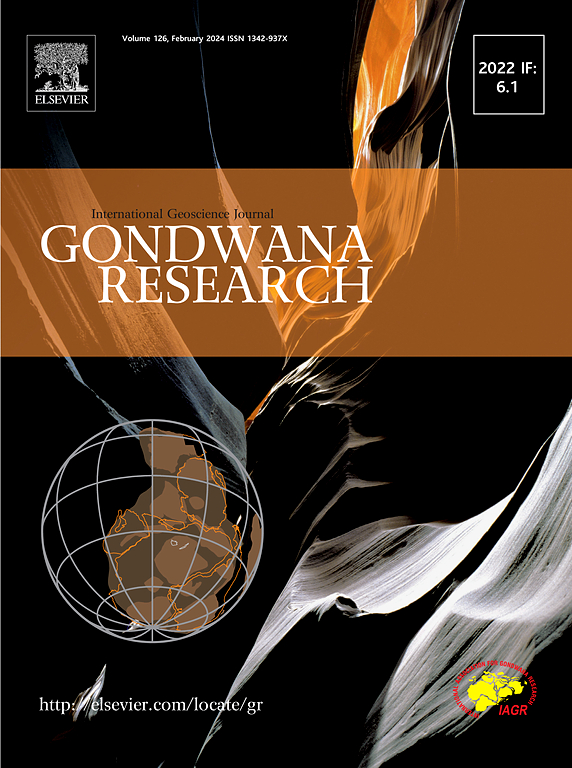Ice-thermal feedback-driven temperature variability on the Tibetan Plateau
IF 7.2
1区 地球科学
Q1 GEOSCIENCES, MULTIDISCIPLINARY
引用次数: 0
Abstract
Despite globally parallel changes in insolation intensity, the nature and causes of Holocene stadial-interstadial transitions and relevant cycles remain mysterious. Particularly, the ice-thermal feedbacks caused by the ice sheet on the Tibetan Plateau have pronounced effects in the interannual surface-heat anomaly and local-to-remote atmospheric circulations. However, its long-term variations and impacts in terms of melt-freeze dynamics remain mysterious. Our results are based on decadal resolved difference between two oxygen isotope records during the past 12,000 years from Donggi Cona Lake, north-eastern Tibetan Plateau. They indicate surface-heat anomaly-caused air-temperature variabilities, which were about −3 °C in springs 9,500 years ago and 2 °C in autumns afterwards on average, independent from insolation strength. We find that increasing autumn air-temperature variability generated large-scaled vertical convections over the Plateau 4,500 years ago. Since then, the recent Tibetan Plateau thermal forcing centre formed with the noted increase in anthropogenic greenhouse gas emission. The predicted increasing autumn air-temperature with greenhouse effect portends future higher atmospheric sensitivity. We anticipate Holocene ice-ages to be tipping points of the coupled surface-atmosphere climate changes.

青藏高原冰热反馈驱动的温度变化
尽管全球的日照强度变化是平行的,但全新世间日转换的性质和原因以及相关的周期仍然是一个谜。特别是青藏高原冰盖引起的冰-热反馈对年际地热异常和局地-远地大气环流有显著的影响。然而,它在融冻动力学方面的长期变化和影响仍然是一个谜。我们的研究结果基于青藏高原东北部东奇湖近12000年两个氧同位素记录的年代际分辨差。它们表明了地表热异常引起的气温变化,9500年前的春季平均约为- 3°C,之后的秋季平均约为2°C,与日照强度无关。我们发现,4500年前,秋季气温变化的增加在高原上空产生了大规模的垂直对流。此后,青藏高原近代热强迫中心形成,人为温室气体排放显著增加。预测的秋季气温随温室效应的升高预示着未来大气敏感性的提高。我们预计全新世冰期是地表-大气耦合气候变化的引爆点。
本文章由计算机程序翻译,如有差异,请以英文原文为准。
求助全文
约1分钟内获得全文
求助全文
来源期刊

Gondwana Research
地学-地球科学综合
CiteScore
12.90
自引率
6.60%
发文量
298
审稿时长
65 days
期刊介绍:
Gondwana Research (GR) is an International Journal aimed to promote high quality research publications on all topics related to solid Earth, particularly with reference to the origin and evolution of continents, continental assemblies and their resources. GR is an "all earth science" journal with no restrictions on geological time, terrane or theme and covers a wide spectrum of topics in geosciences such as geology, geomorphology, palaeontology, structure, petrology, geochemistry, stable isotopes, geochronology, economic geology, exploration geology, engineering geology, geophysics, and environmental geology among other themes, and provides an appropriate forum to integrate studies from different disciplines and different terrains. In addition to regular articles and thematic issues, the journal invites high profile state-of-the-art reviews on thrust area topics for its column, ''GR FOCUS''. Focus articles include short biographies and photographs of the authors. Short articles (within ten printed pages) for rapid publication reporting important discoveries or innovative models of global interest will be considered under the category ''GR LETTERS''.
 求助内容:
求助内容: 应助结果提醒方式:
应助结果提醒方式:


